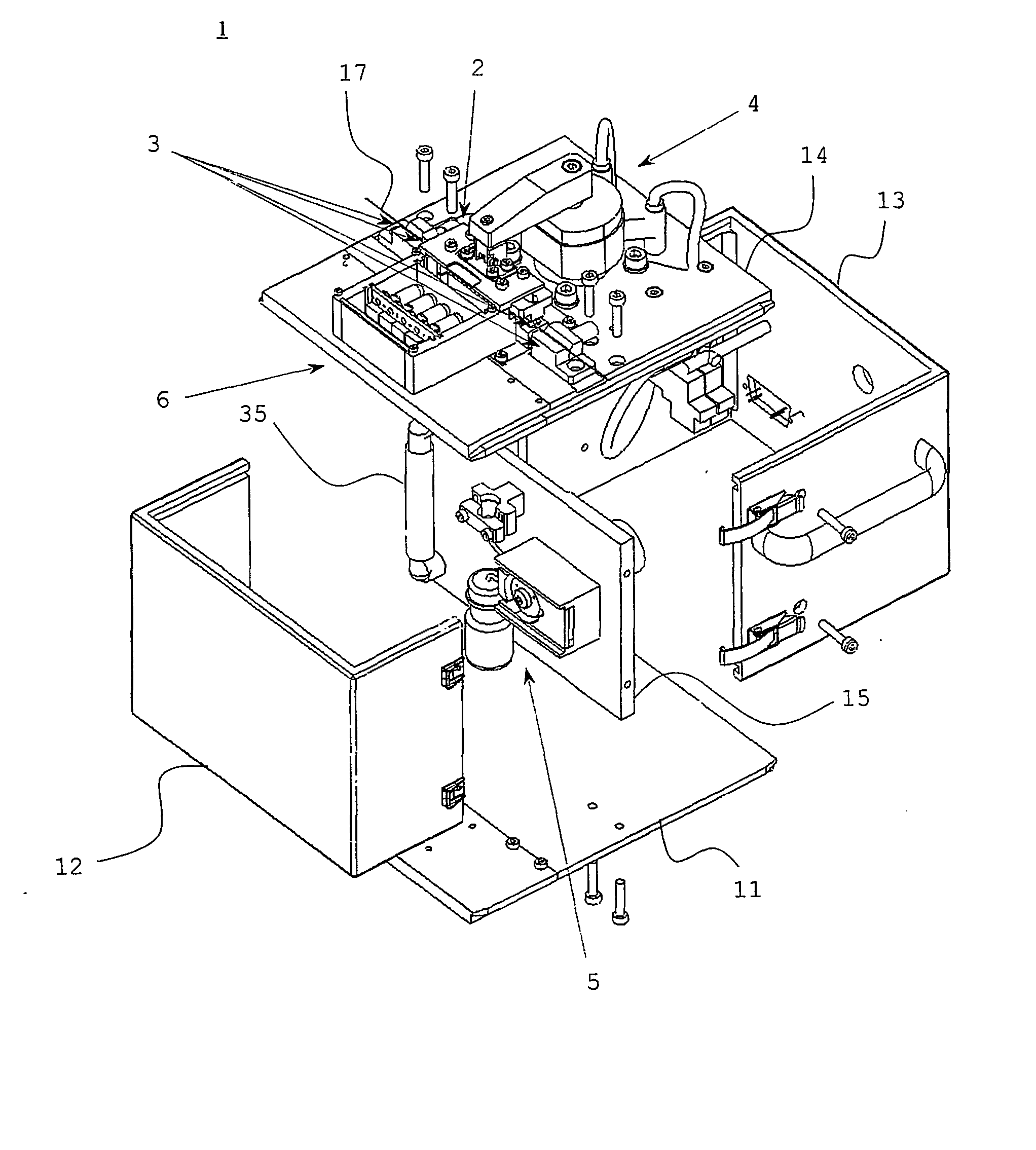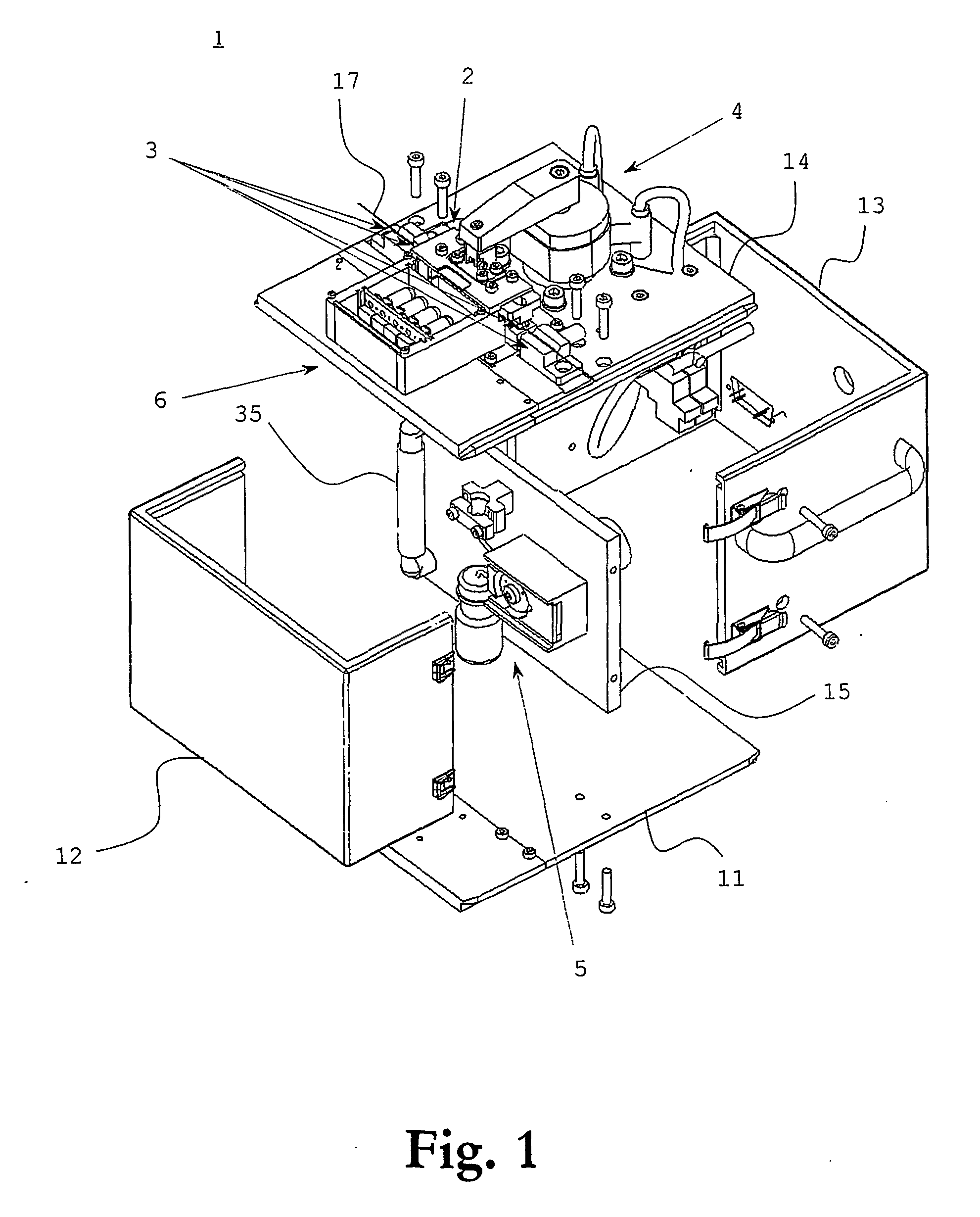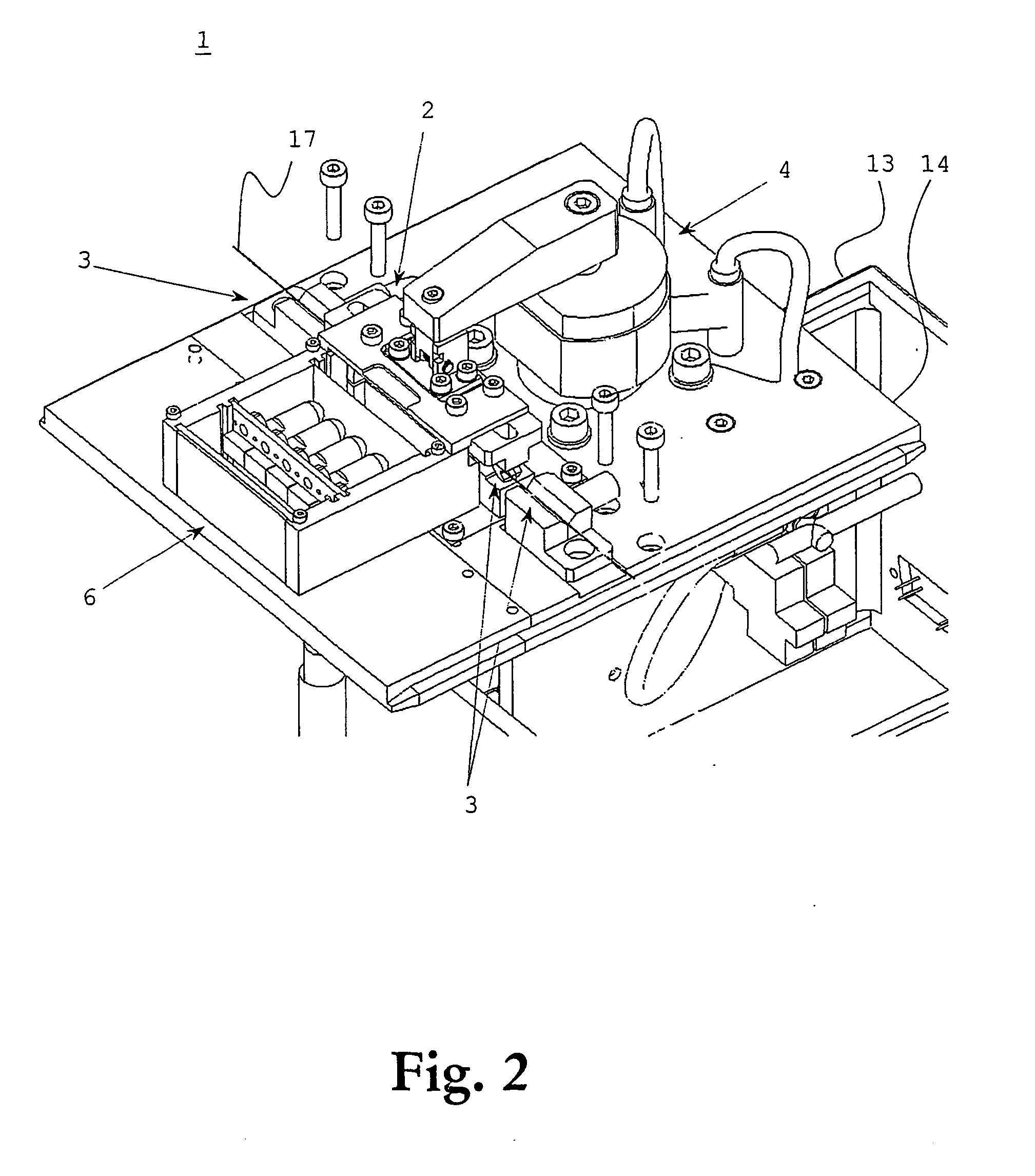Recoating of optical fiber
a technology of coating and optical fiber, applied in the field of coating of optical fiber, can solve the problems of difficult to remove optical fiber, material is sticky with respect to ultraviolet curable coating material (acrylate), and the splicing of optical fiber becomes more common
- Summary
- Abstract
- Description
- Claims
- Application Information
AI Technical Summary
Benefits of technology
Problems solved by technology
Method used
Image
Examples
Embodiment Construction
[0048] In the following description, for purposes of explanation and not limitation, specific details are set forth, such as particular techniques and applications in order to provide a thorough understanding of the present invention. However, it will be apparent to one skilled in the art that the present invention may be practiced in other embodiments that depart from these specific details. In other instances, detailed descriptions of well-known methods and apparatuses are omitted so as not to obscure the description of the present invention with unnecessary details.
[0049] With reference to FIGS. 1 and 2, which schematically, in exploded perspective views, illustrate a recoating apparatus 1 for recoating spliced end portions of two lengths of optical fibers 17, an embodiment of the present invention will be overviewed. The apparatus comprises five main parts or components: a mold arrangement 2 including a mold cavity, a holding and stretching arrangement 3, a movement and clamping...
PUM
| Property | Measurement | Unit |
|---|---|---|
| surface tension | aaaaa | aaaaa |
| surface tension | aaaaa | aaaaa |
| surface tension | aaaaa | aaaaa |
Abstract
Description
Claims
Application Information
 Login to View More
Login to View More - R&D
- Intellectual Property
- Life Sciences
- Materials
- Tech Scout
- Unparalleled Data Quality
- Higher Quality Content
- 60% Fewer Hallucinations
Browse by: Latest US Patents, China's latest patents, Technical Efficacy Thesaurus, Application Domain, Technology Topic, Popular Technical Reports.
© 2025 PatSnap. All rights reserved.Legal|Privacy policy|Modern Slavery Act Transparency Statement|Sitemap|About US| Contact US: help@patsnap.com



